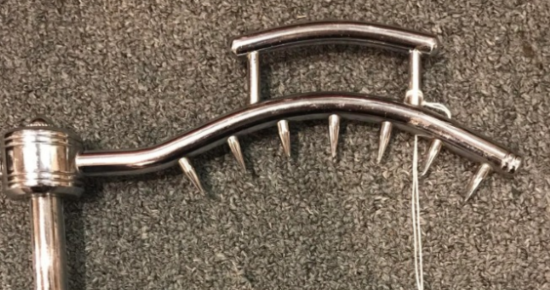In the world of antique shopping, stumbling upon an unidentified object can be a thrilling experience. Recently, a peculiar metal spiked object sparked curiosity among shoppers and staff at a Maryland antique store. With a tag that candidly admitted, “What is this!?,” this mysterious item became the subject of speculation and intrigue.
At first glance, the object’s function was unclear. Its design featured sharp metal spikes arranged to hold something in place, but without the accompanying cutting board, its purpose remained a mystery. Even the antique store staff was stumped.
Fortunately, the collective knowledge of an online community on Reddit helped identify the object as a roast or ham holder designed to mount to a cutting board. This revelation shed light on the fascinating world of culinary antiques and the evolution of kitchen gadgets over time.
These roast or ham holders were designed for practicality and ease in the kitchen, particularly during a time when large cuts of meat were a centerpiece of dining and entertainment. By securely anchoring the meat to a cutting board, these holders facilitated the carving process, allowing for more precise and elegant serving.
The design of the roast holder reflects an era when kitchen tools were crafted with durability and efficiency in mind. The missing cutting board, likely made of wood, would have completed this kitchen ensemble, providing a stable base for the holder.
This discovery journey highlights the significant role of online communities in solving mysteries of the past. Platforms like Reddit bring together individuals with diverse expertise and interests, creating a collective intelligence capable of piecing together puzzles left behind by history.
The story of the roast or ham holder is a testament to the allure of antique shopping. Every item holds a story waiting to be uncovered, offering insights into the cultural and social practices of the past. For enthusiasts of culinary history, such items are a window into the evolution of cooking and dining customs, reflecting changes in technology, taste, and lifestyle over time.
The metal spiked object, initially met with confusion, reveals the rich tapestry of culinary history and the evolution of kitchen tools. Its identification as a roast or ham holder underscores the value of community knowledge in unraveling historical mysteries. This discovery enriches our understanding of past culinary practices and celebrates the joy of exploration and the quest for knowledge.


